"I believe that my first attraction towards the family of Sun-birds took place in Nubia, where I fell in with Hedydipna metallica, the first truly tropical form of bird that I had ever procured.
The sense of pleasure with which I preserved my first specimens of this beautiful little species on the banks of the Nile above the First cataract, and the engaging habits of the species, impressed me so much, that on subsequent visits to the African continent I paid especial attention to the Sun-birds in each country I visited." [link]
[from the Introduction to 'A Monograph of the Nectariniidae' by Captain GE Shelley]
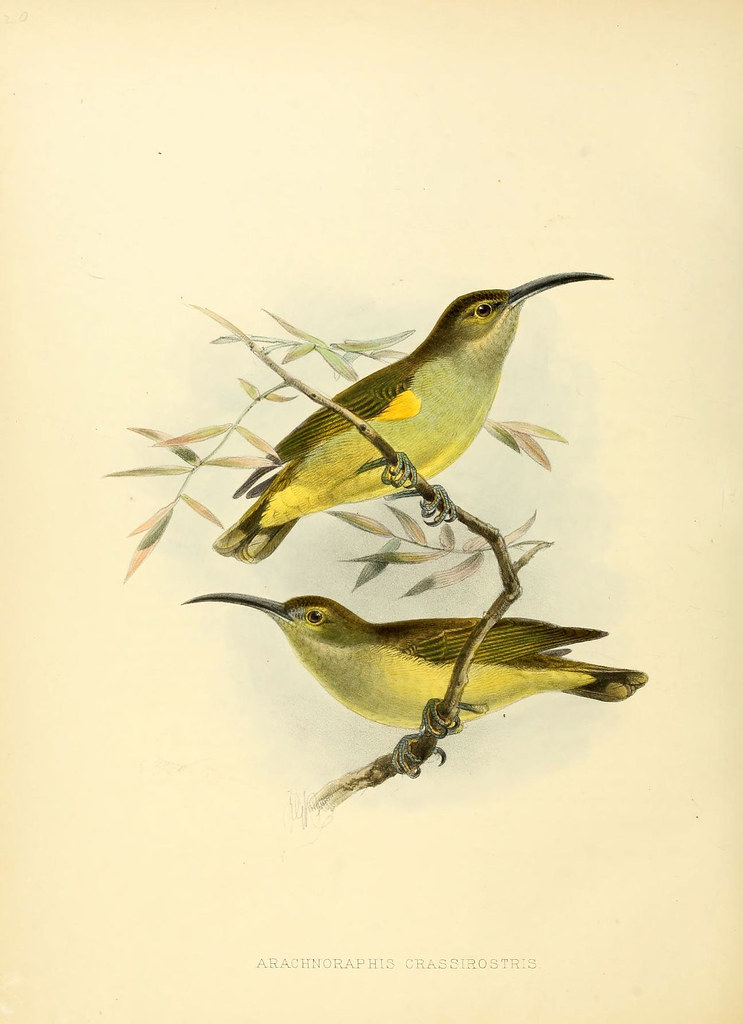
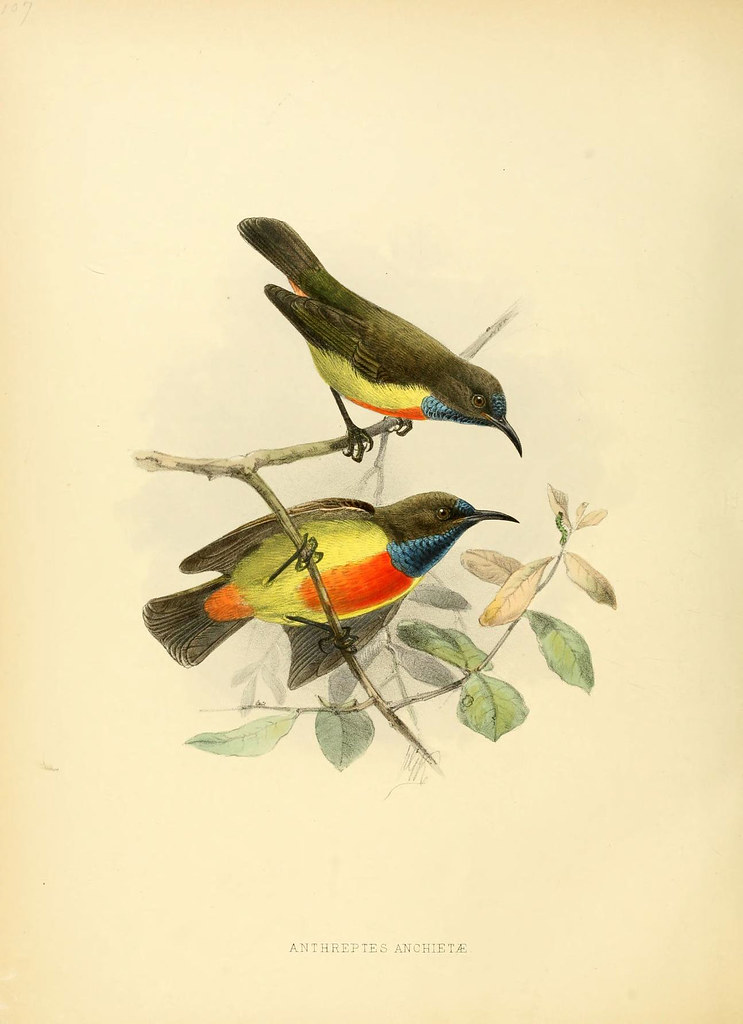
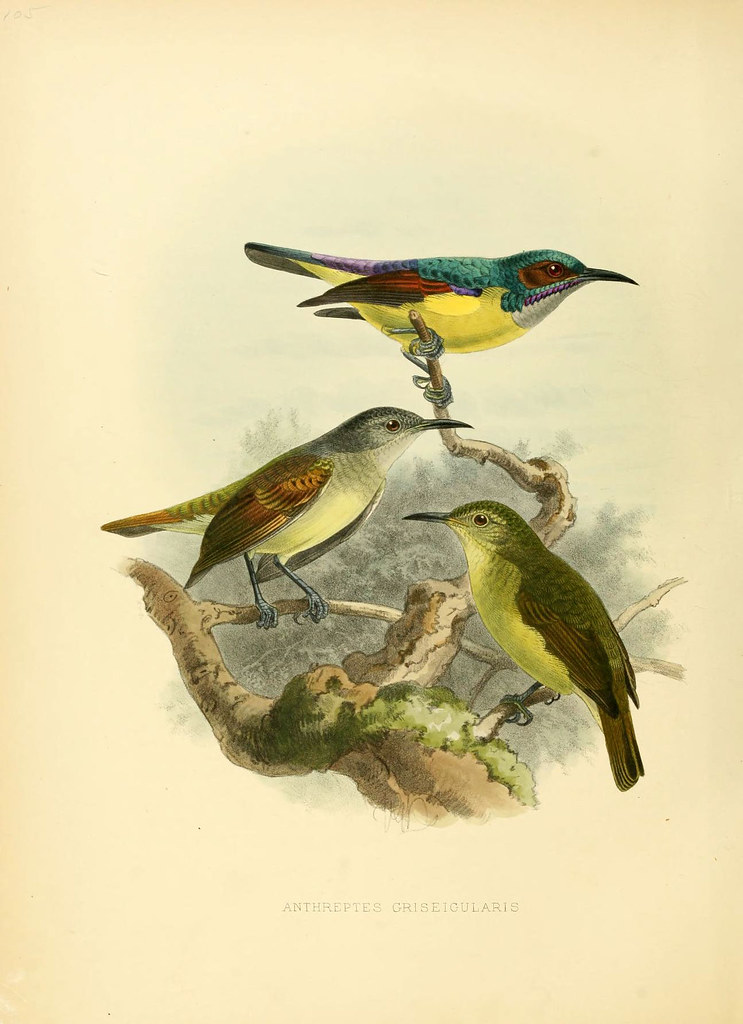
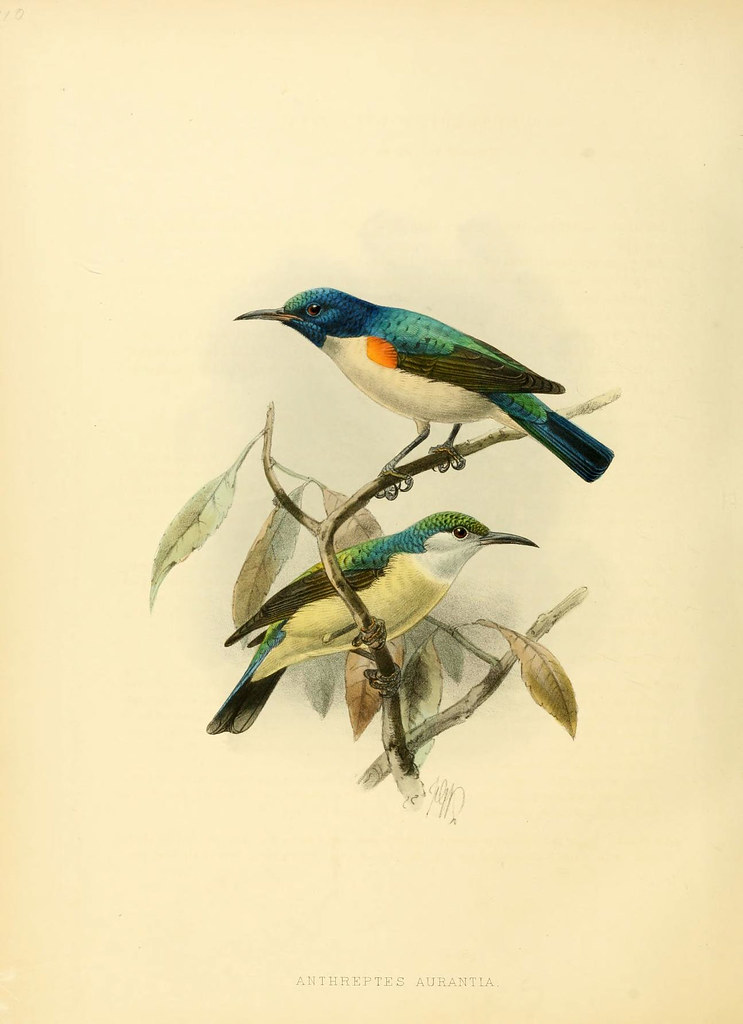
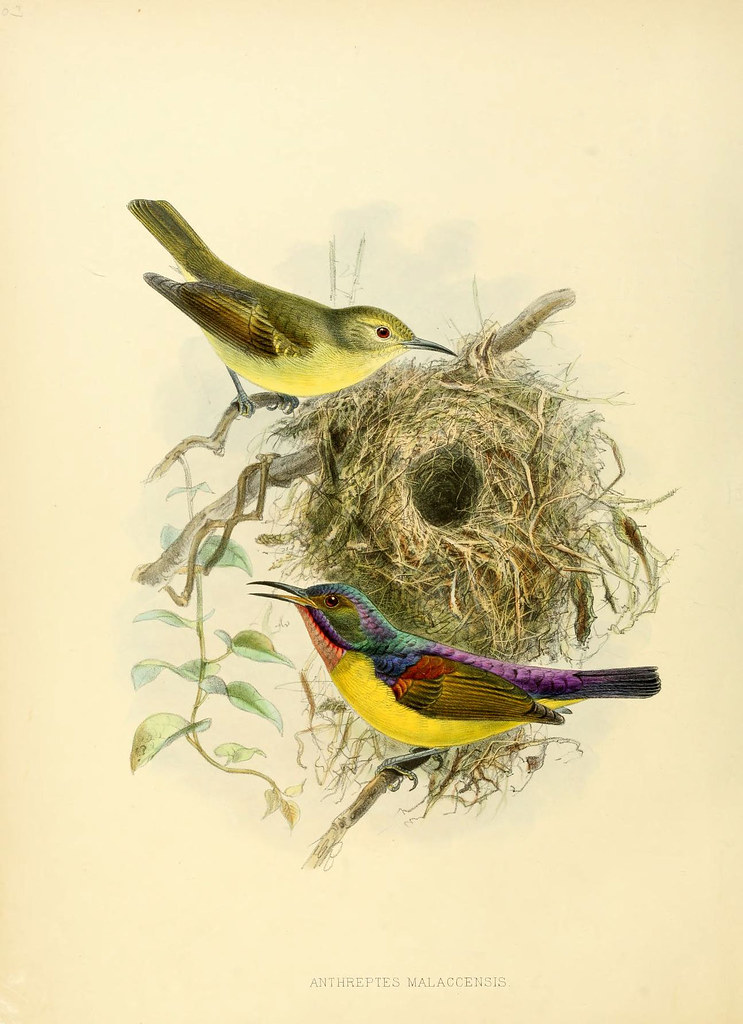
[W]: "The sunbirds and spiderhunters are a family, Nectariniidae, of very small passerine birds. There are 132 species in 15 genera.
The family is distributed throughout Africa, the Indian Subcontinent, Southeast Asia and just reaches northern Australia. Most sunbirds feed largely on nectar, but also take insects and spiders, especially when feeding young. Flower tubes that bar access to nectar because of their shape, are simply punctured at the base near the nectaries. Fruit is also part of the diet of some species. Their flight is fast and direct on their short wings.
The sunbirds have counterparts in two very distantly related groups: the hummingbirds of the Americas and the honeyeaters of Australia. The resemblances are due to convergent evolution brought about by a similar nectar-feeding lifestyle. Some sunbird species can take nectar by hovering like a hummingbird, but usually perch to feed."
Sun-birds (Nectariniidae) information, photos and videos at the Internet Bird Collection - "a non-profit endeavour with the ultimate goal of disseminating knowledge about the world's avifauna."
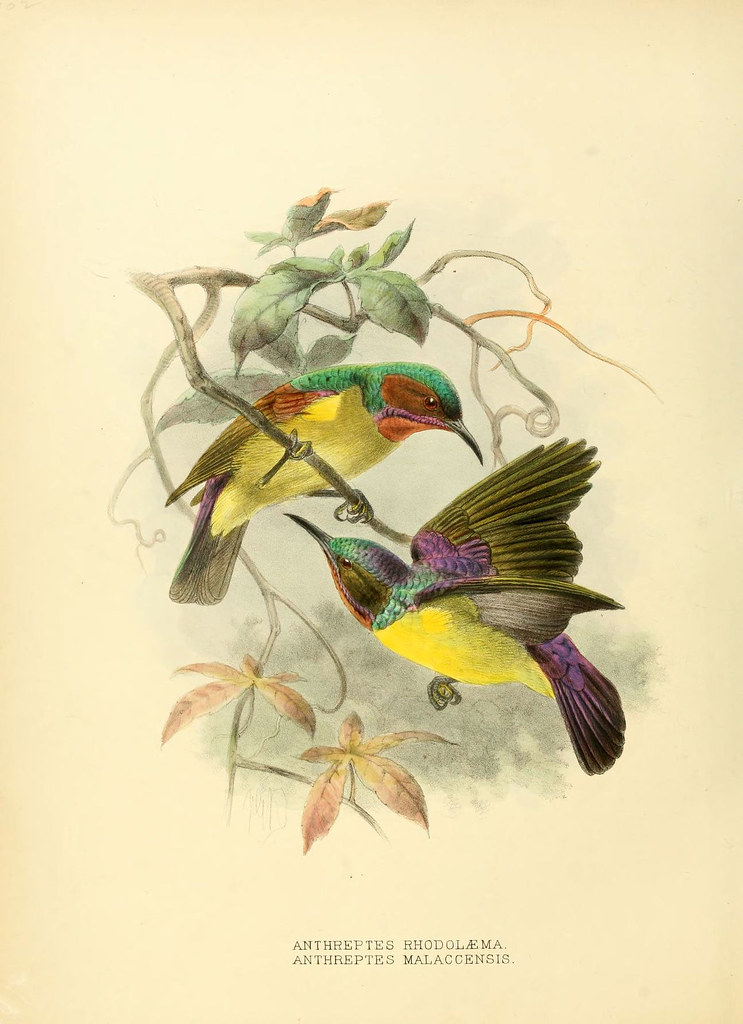


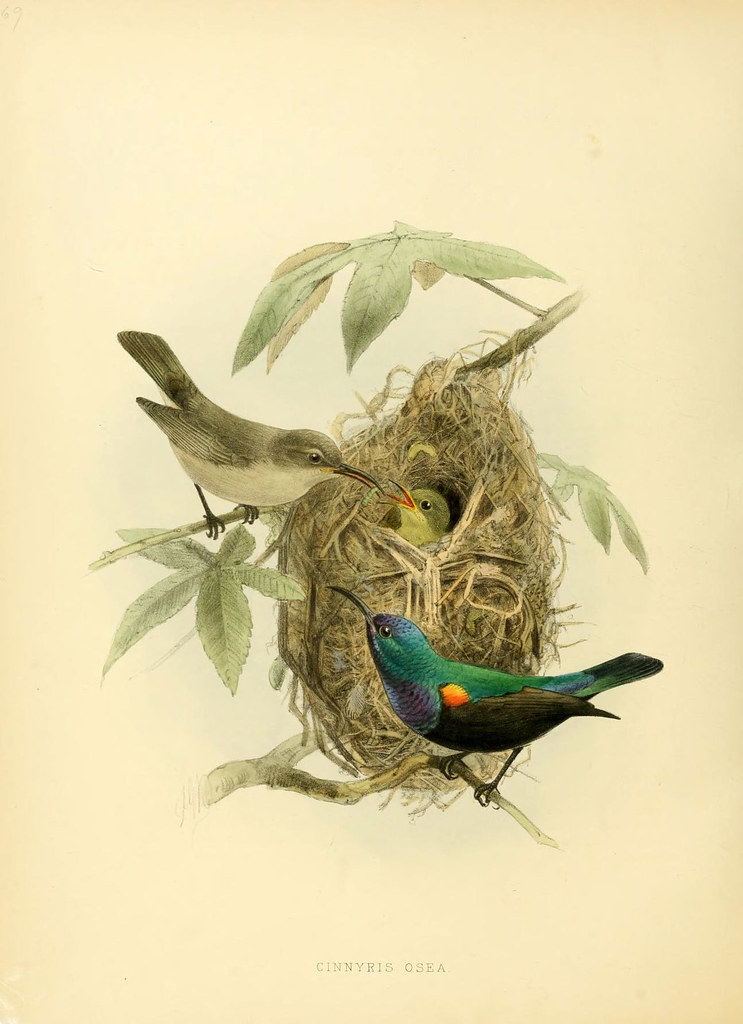
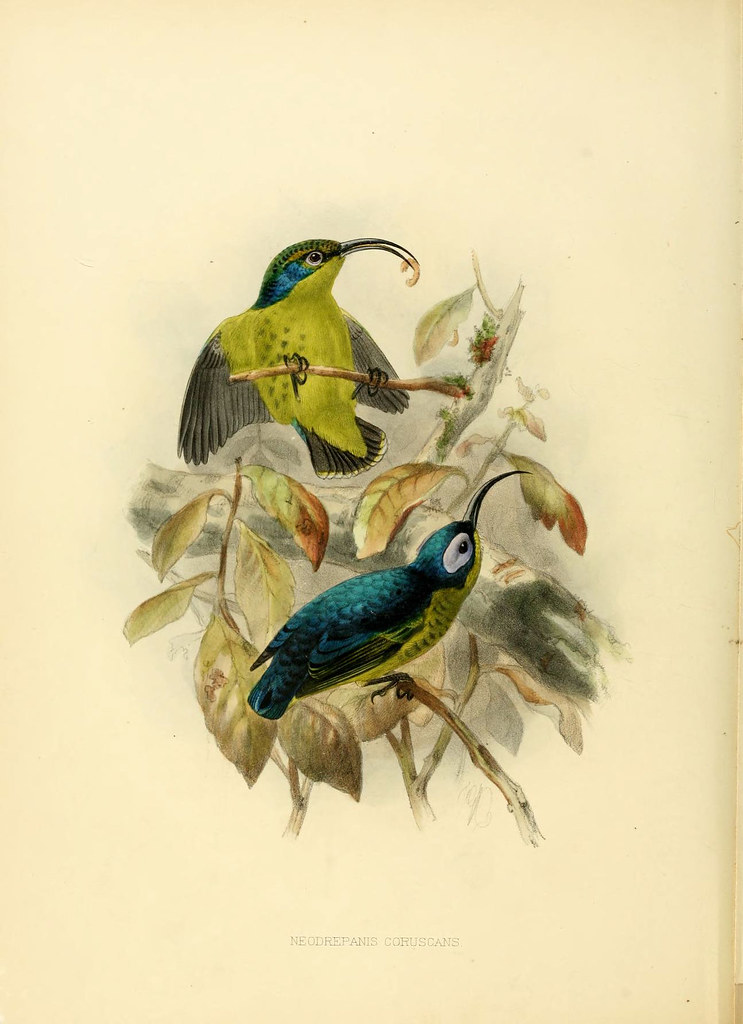
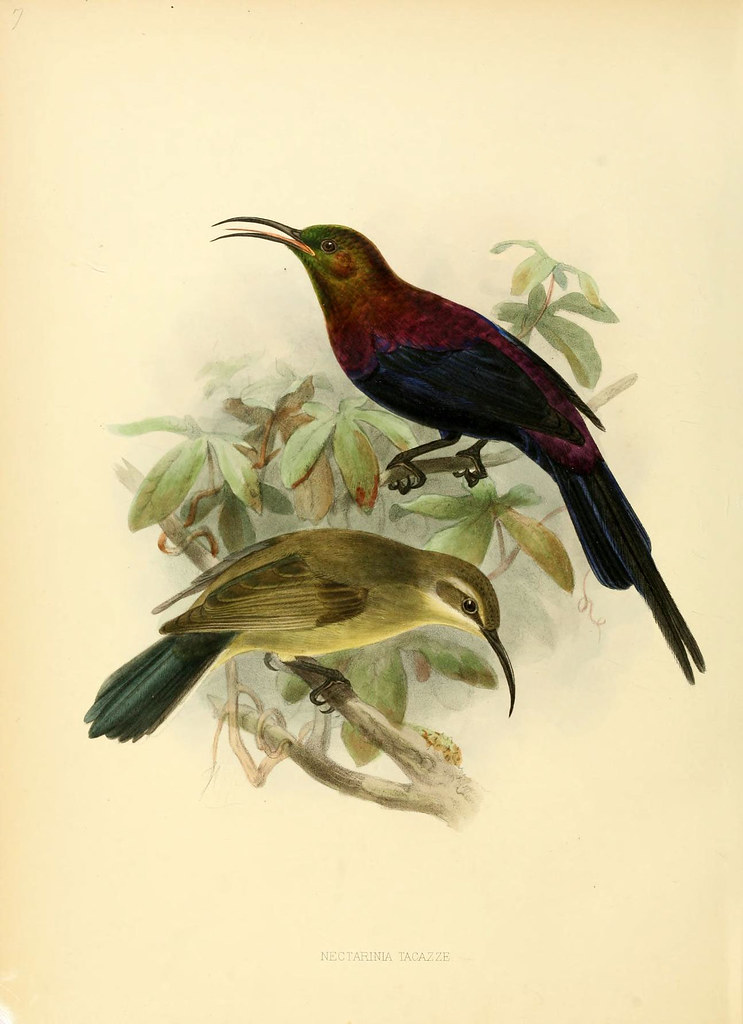
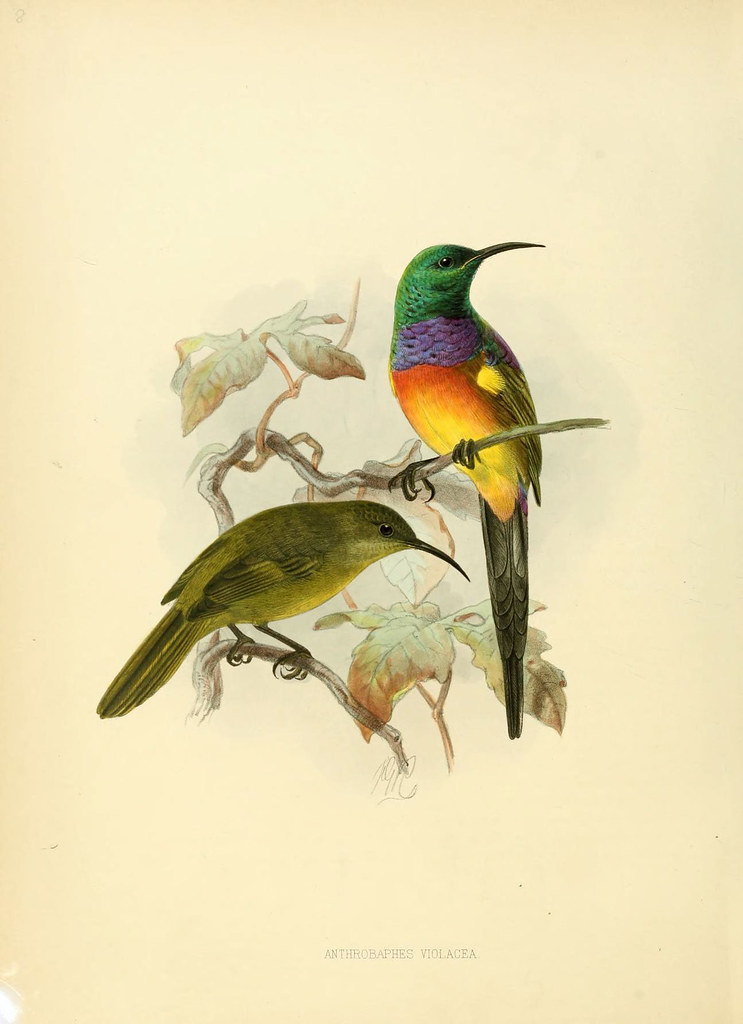
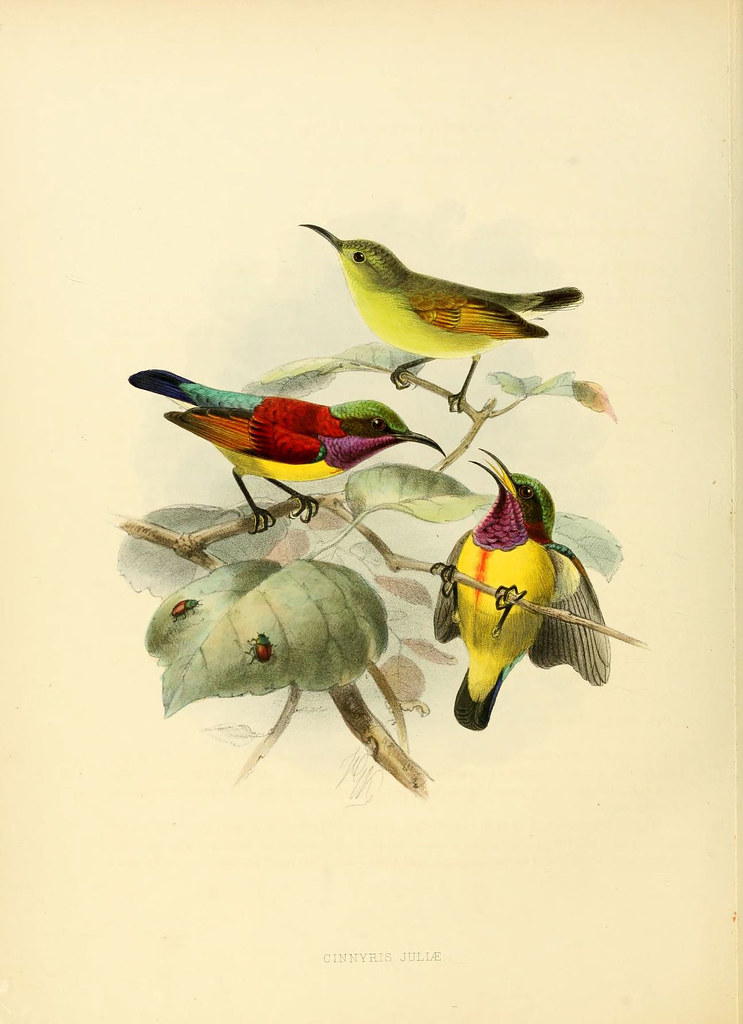
George Ernest Shelley (1840-1910) was a geologist, ornithologist, nephew of the renowned poet, Percy Bysshe Shelley^ and author of a number of books on African birds.
Of particular note was an unfinished 5-volume series covering all the birds of Africa^ which was cut short when the author suffered a stroke towards the end of his life. Regrettably, a stand-in author, tasked by Shelley's wife to supply at least another three volumes to complete the series, for whatever reason only managed to polish up Shelley's final book and he went no further with the project.
It was Shelley's (and our) good fortune that he was able to collaborate on the Sun-birds book with the excellent Dutch artist and naturalist, John Gerrard Keulemans (1842-1912). Keulemans had begun his career as a taxidermist for the Leiden Museum of Natural History and its director encouraged him to accompany a 2-year expedition to Africa in the mid-1860s as a kind of artist-scientist.
Our author, GE Shelley, obviously had sufficient regard for his illustrator's journal notes from the African trip, as he relied upon them as a source when writing the Sun-birds book. (in fact, Shelley acknowledged Keulemans' artistic and scientific reporting qualities in a glowing reference to the illustrator in the book's introduction)
More than 120 lithographs were prepared by Keulemans for the collaborative project on Sun-birds which consisted of twelve instalments being issued over a four year period to a mere 250 subscribers. No wonder a first edition copy of the bound book was sold in recent times for around $11,000.
The lithographic illustrations - printed by M&N Hanart - were hand-coloured and finished with gum arabic highlighting to particular small sections among the feather arrangements.
"Keulemans paid particular attention to colour and structure of feathering and his ability to transmit clear, accurate impressions of various plumages was held in much esteem. Overall, his skills for accurate representations are attributable to his detailed study of birds." [source]The quality of the plates from 'The Monograph of the Nectariniidae..' (also known by its original working title of 'Monograph of the Cinnyridae..') brought Keulemans instant acclaim, early in a very notable book illustration career. He moved to England and became the leading ornithological artist of the late-Victorian era, contributing illustrations to a number of significant book and journal publications on birds.
- The illustrations seen here from 'A Monograph of the Nectariniidae, or, Family of Sun-birds' by GE Shelley and JG Keulemans (1876-1880) come courtesy of this Flickr set, uploaded by the most fabulous and collaborative, multi-institutional Biodiversity Heritage Library. Click on any of the images above to access much larger image files on Flickr.
- The Sun-birds book at the Biodiversity Heritage Library. {bibliographic record}.
- The Sun-birds book at the Internet Archive.
- Most of the information in this blog entry derives from three sources: AbeBooks, Antiquariaat Junk and a number of Christie's auction records.
- Works by Shelley: Amazon & Archive.org.
- Works by Keulemans: Amazon & Archive.org.
- Just in passing, I noted that one reference in particular is quoted all over the place and I presume it is the authority on ornithological publications: 'Catalogue of the Edward E. Ayer Ornithological Library' by JT Zimmer (1996 edition) -- (1926).
- 'Feathers to Brush the Victorian Bird Artist John Gerrard Keulemans 1842-1912' (1982) by Jan Coldewey (limited edition biography)



















11 comments :
Oh my goodness these works of art, the beauty of these birds, and the history behind them is amazing!
2012 Artist Series featuring the gifted Decorative Painter Theresa Cheek!
xoxo
Karena
Art by Karena
I love sunbirds! Your 10th photo is of the very same kind that often comes to drink nectar in my flowerboxes in the window right here over my desk! I keep a color print of this Cinnyris osea copied from Tristram's "Flora & Fauna of Palestine" framed on my wall. It looks similar to this one, but different. Thank you for sharing these!
My southwest USA desert locale makes me privy to numerous hummingbird encounters. I didn't know they had such beautiful relatives. These lithographs are exquisite!
PK - I always love reading your posts, and am glad BHL can help provide images. The contextualization you provide to our scanned pages is invaluable for people like me who want to learn more about why these images are important or of interest. Thanks for doing what you do!
Unlike Hummingbirds, Sunbirds generally don't hover when they are sucking the sap. They usually clutch the closest object. They *can* hover but most often choose not to. They're a little larger, and their wings aren't as invisible when they fly.
Thanks very much.
It's hard to go too far wrong when the works of great artists and authors are chosen, digitised and hosted by great repositories. I just shoot the fish. Someone else supplies the barrel. And the fish.
thanks
Beautiful
Have you seen the book America's Other Audubon by Joy M. Kiser? The illustrations (originally hand-coloured line lithographs) are very reminiscent of these. They come from what seems a very rare publication, Illustrations of the Nests and Eggs of Birds of Ohio, created by a wealthy family in tribute to a brilliant daughter, Genevieve Jones, who sadly died just as the project was getting started. It's a really fascinating story.
Hi Neil and thanks. Yes, I certainly know about 'America's Other Audubon'. It's one of a very very very small number of review books I've said yes to and I await its delivery.
I knew all (or a big portion of) Jones' legacy was held by the Smithsonian. It's a great story and I remember when I did a post on the series years ago that I had many more questions about it, so I'm really looking forward to the book. Cheers mate!
Hi there !
Your blog is amazing !
just was researching about Aldrovandi and came here.
thanks
Post a Comment
Comments are all moderated so don't waste your time spamming: they will never show up.
If you include ANY links that aren't pertinent to the blog post or discussion they will be deleted and a rash will break out in your underwear.
Also: please play the ball and not the person.
Note: only a member of this blog may post a comment.